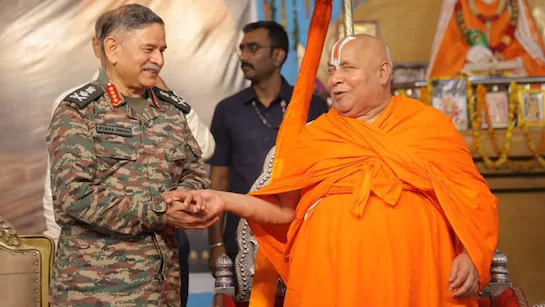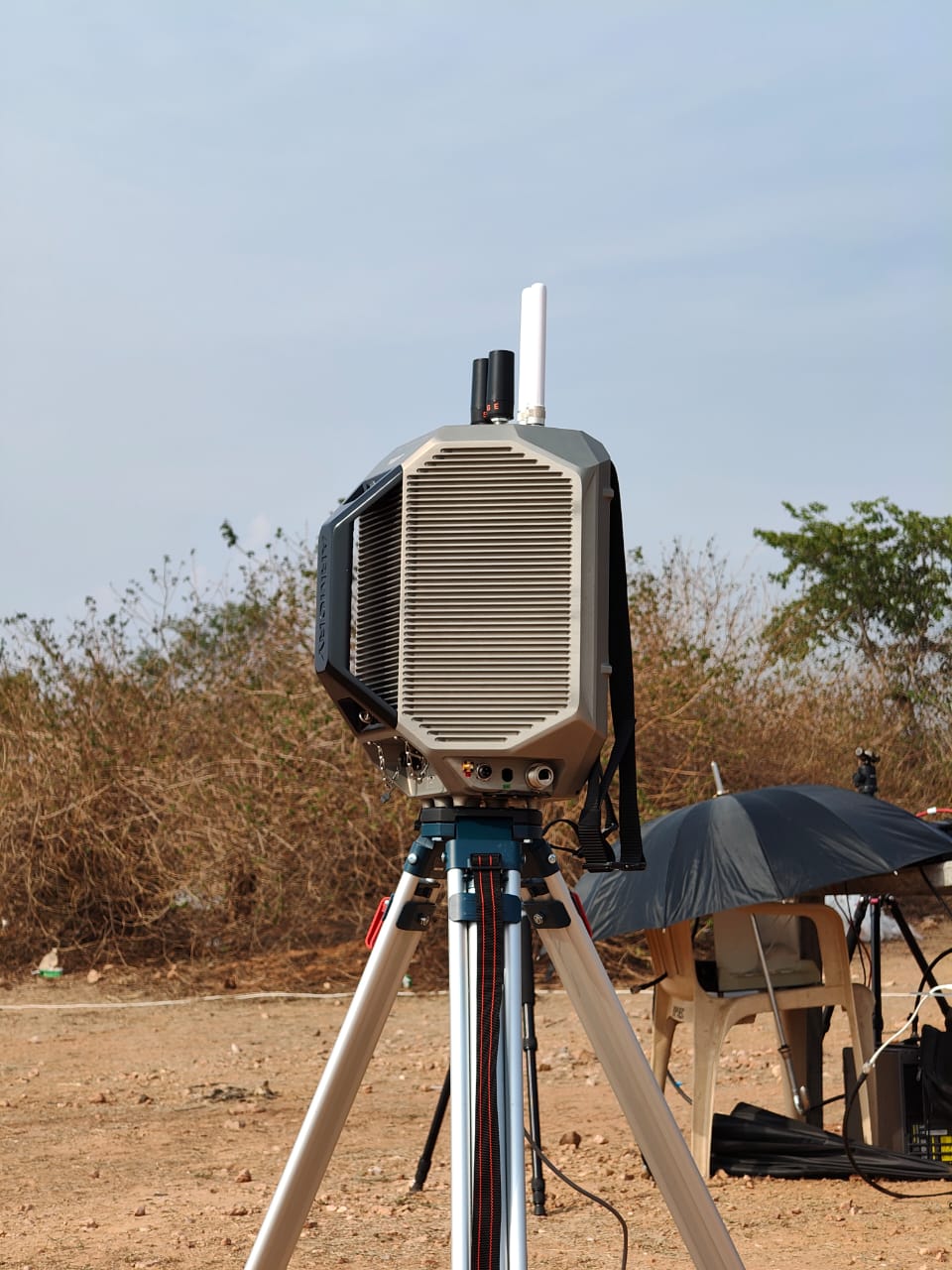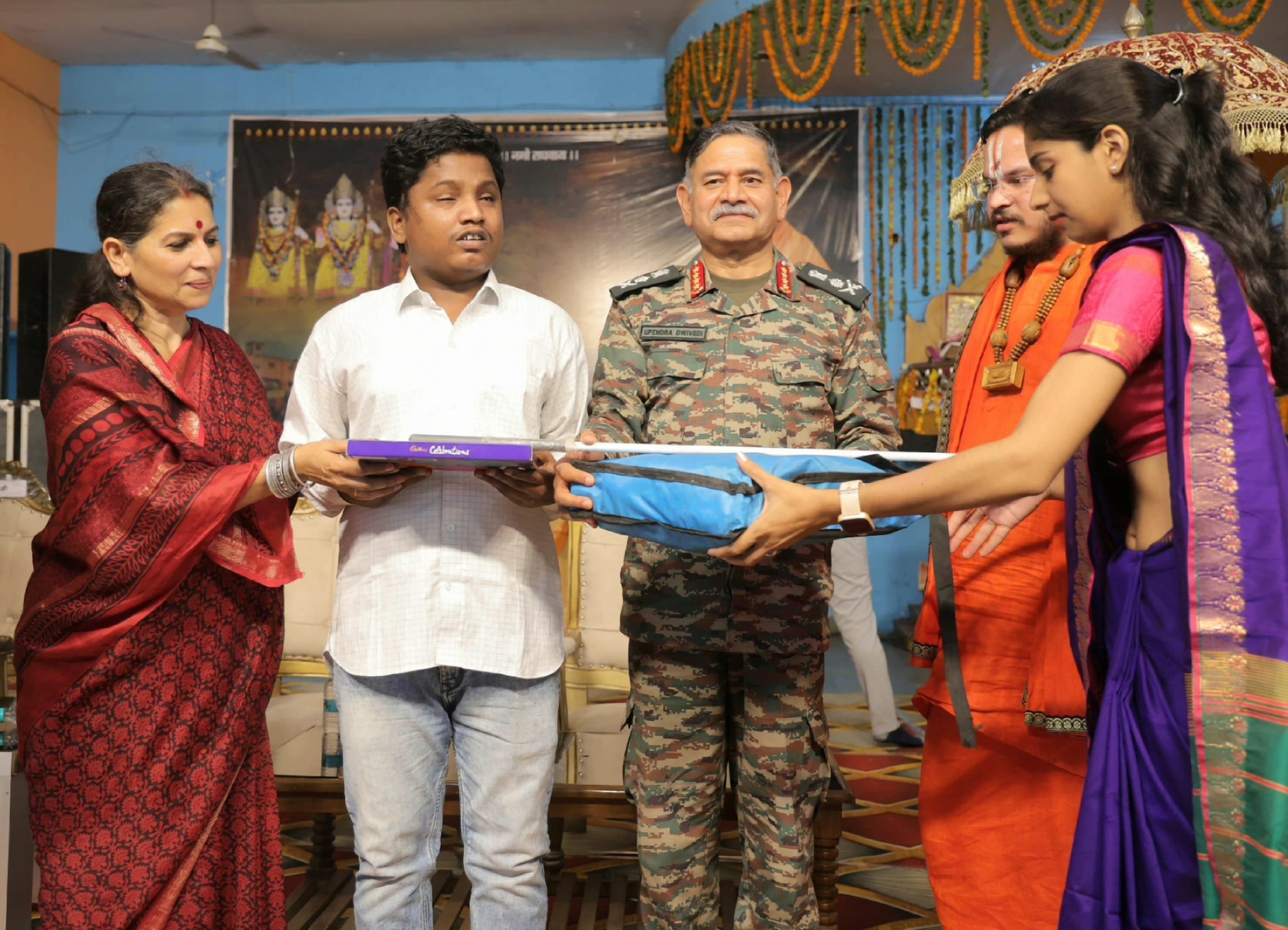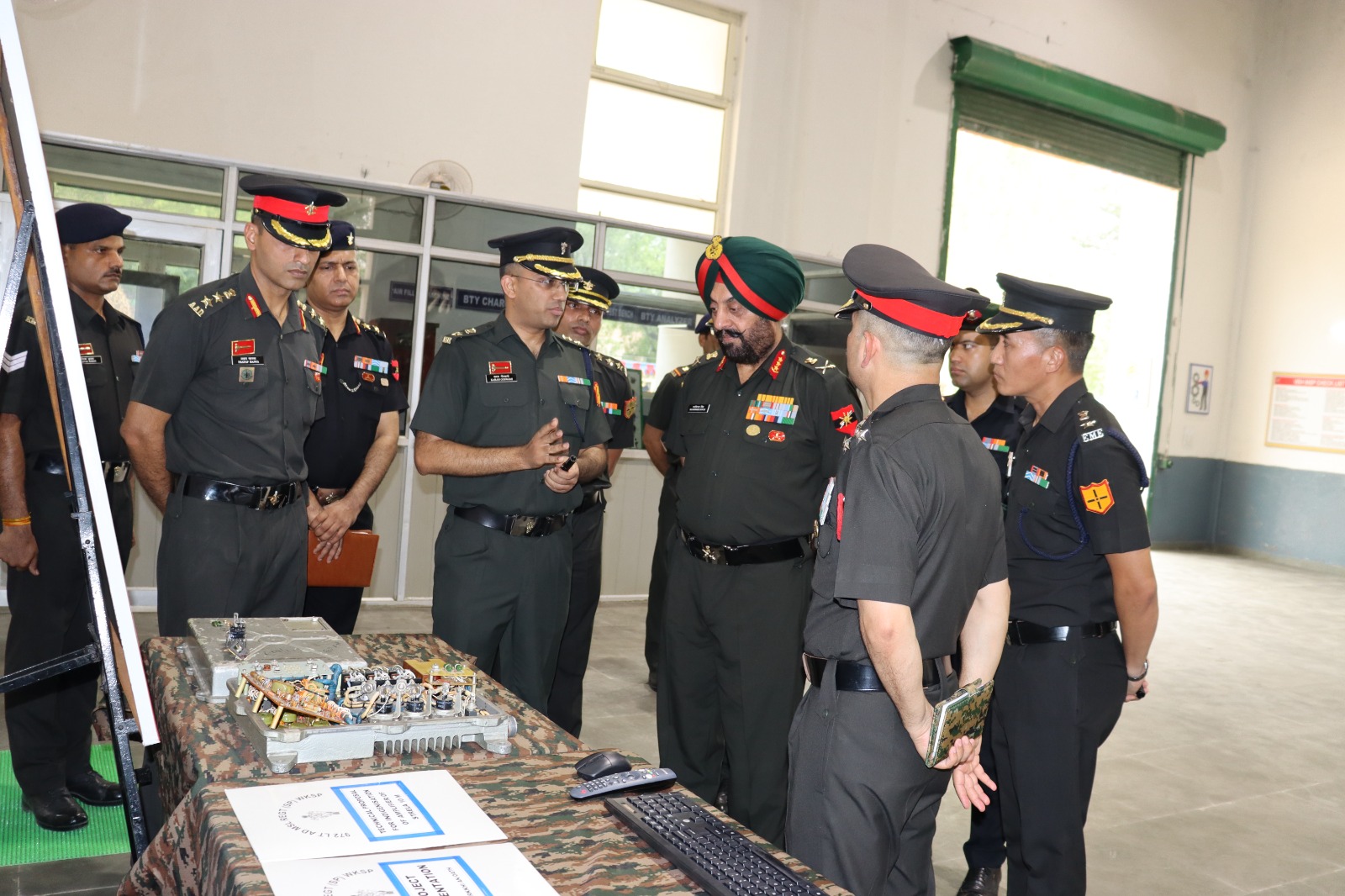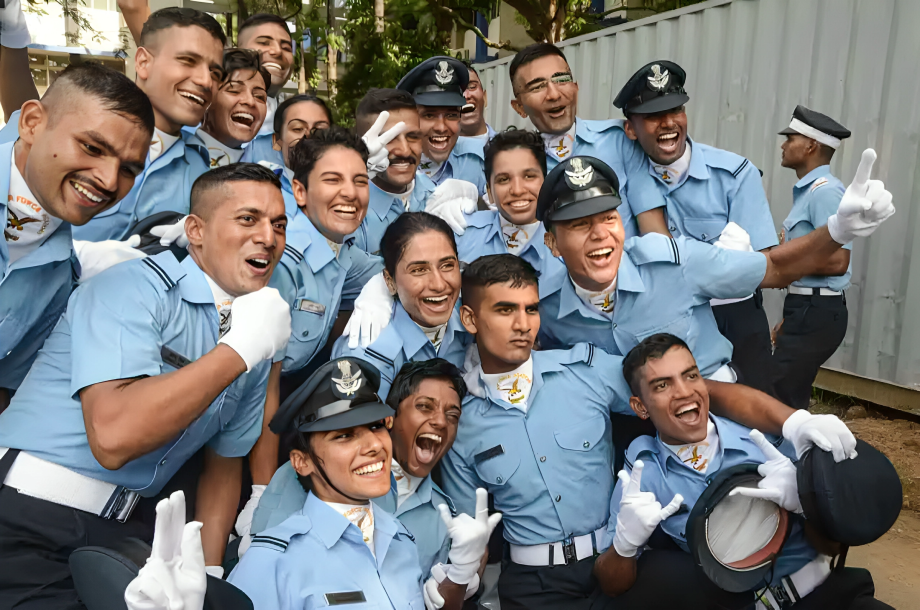Army Chief Receives PoK ‘Guru Dakshina’ Request from Jagadguru Rambhadracharya
Chief of Army Staff General Upendra Dwivedi received an unusual and symbolic request for ‘guru dakshina’ during his visit to…
Indian Army Demonstrates Indigenous SURGE Counter-Drone System at Babina
In a major step towards enhancing India’s defense capabilities and self-reliance, the Indian Army showcased the indigenously developed SURGE Counter…
General Upendra Dwivedi Visits Chitrakoot Institutions, Emphasizes Military-Civil Integration
General Upendra Dwivedi, Chief of Army Staff of the Indian Army, along with Mrs. Sunita Dwivedi, President of the Army…
Lt Gen Manjinder Singh Reviews Combat Preparedness of Kushagra Regiment in Jaipur
Lieutenant General Manjinder Singh, Army Commander of the Sapta Shakti Command, conducted a comprehensive review of the combat readiness of…
Subedar Narayana Wins Double Gold at Asian Indoor Rowing Championships
Subedar Narayana, a para-athlete from the Indian Army, has brought immense pride to the nation by clinching two gold medals…
AFCAT 2 2025 Notification Out for 284 Posts, Online Application Begins From 2nd June 2025
The Indian Air Force (IAF) has officially released the AFCAT 2 2025 Notification, announcing a total of 284 vacancies for…

